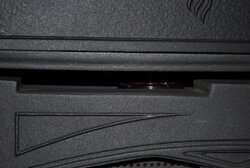Tom NJ said:MetMan said:got a Fiskars yet? ;-)
No, I haven't. I presume that it is a maul?
Fiskars has 4 1/4 and 2 1/2 pound splitting axes (Super Splitter and Pro Splitter) that are pretty handy, and lots of fun to use once you get used to them. The don't wear you out but take some practice to master as the are very sharp and have fairly short handles.


